A 1,350km ride linking Merida and San Sebastian (Donostia), via eastern Portugal.
Riding a Swabia with 700c G-One 45mm tubeless and 50:19 gearing, we chose late May and June to avoid the intense heat of the Iberian summer. Merida was the northerly end of our 2008 Andalusian ride and San Sebastian was the southern end of the 2024 France ride. This was a link ride. We have previously also ridden from Nice to Cordoba and, overall, have developed an affection for riding in this corner of Europe.
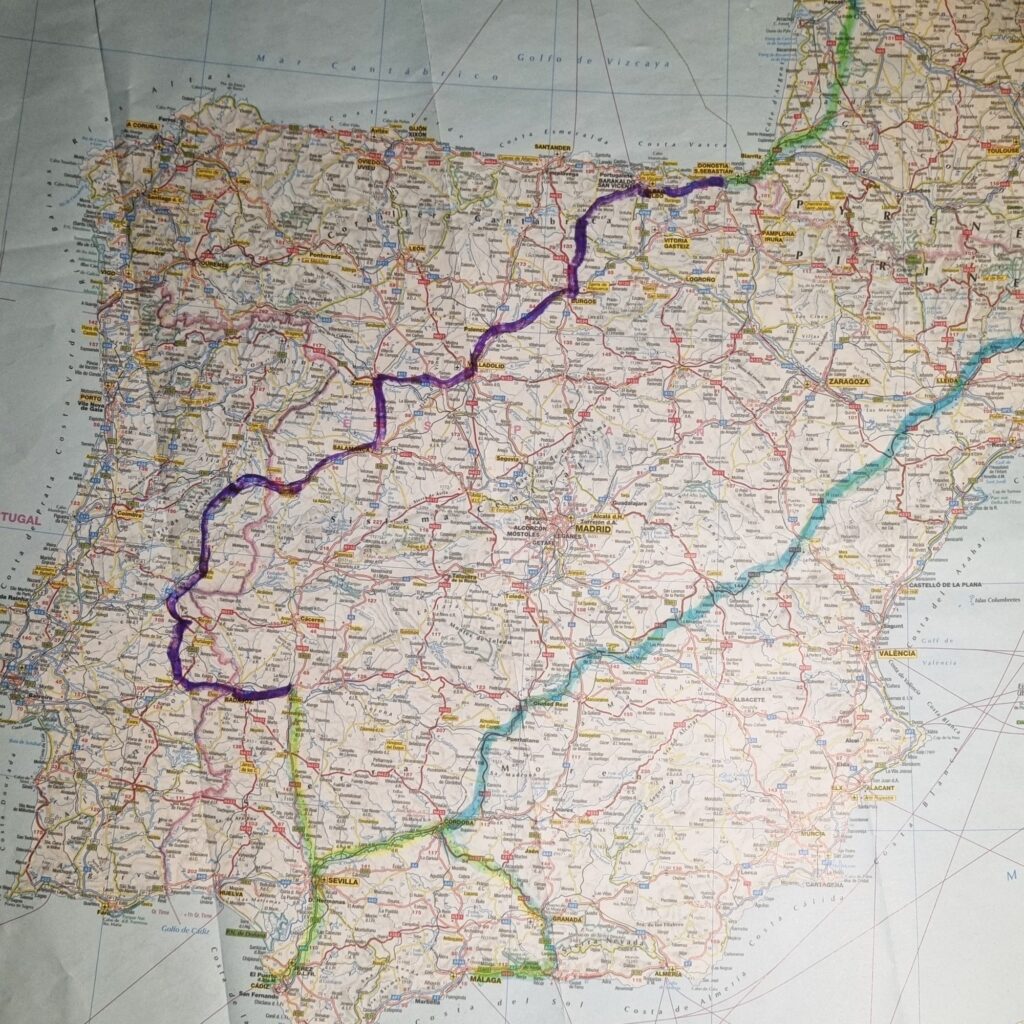
There are bike riding apps like Komoot but it’s just so easy to use google maps and so handy to be able to change things on the day. Google allows you to quickly check out riding and driving routes. Often the “N” roads (the old highways) are the best ways to ride. Or at least for sections. The bike option may not suggest the N road and checking the car option does. In Spain and Portugal, the traffic is mostly on motorways and the N roads are often not at all busy. They have shoulders.
I divide days into two or three stages and for each one plot a route and email it to myself. The final stage has the night accommodation as the end point.
When using the bike option, you must have the screen open to watch for corners. This runs the battery down and in coffee stops I’m sitting near the power point and have a fast charger.
A new motorway provides a bridge over a deep ravine in Guarda province in Portugal. The old highway (N16) goes right down to the Cao River, is superb and has no traffic at all.
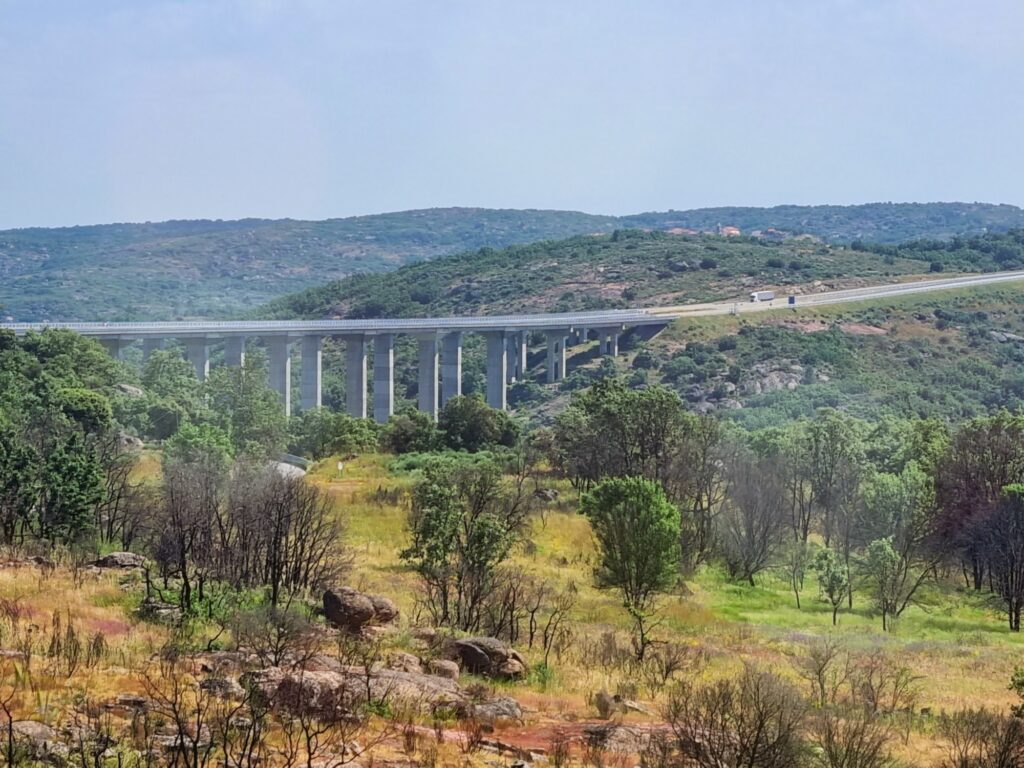
Sometimes the bike route Google gives is pretty hectic. This is north of Palencia. A 25km stage overgrown track. A bike with a rear derailleur would not have been rideable and that’s along walk! Plus, it’s only one stage of a 105km day to Burgos.
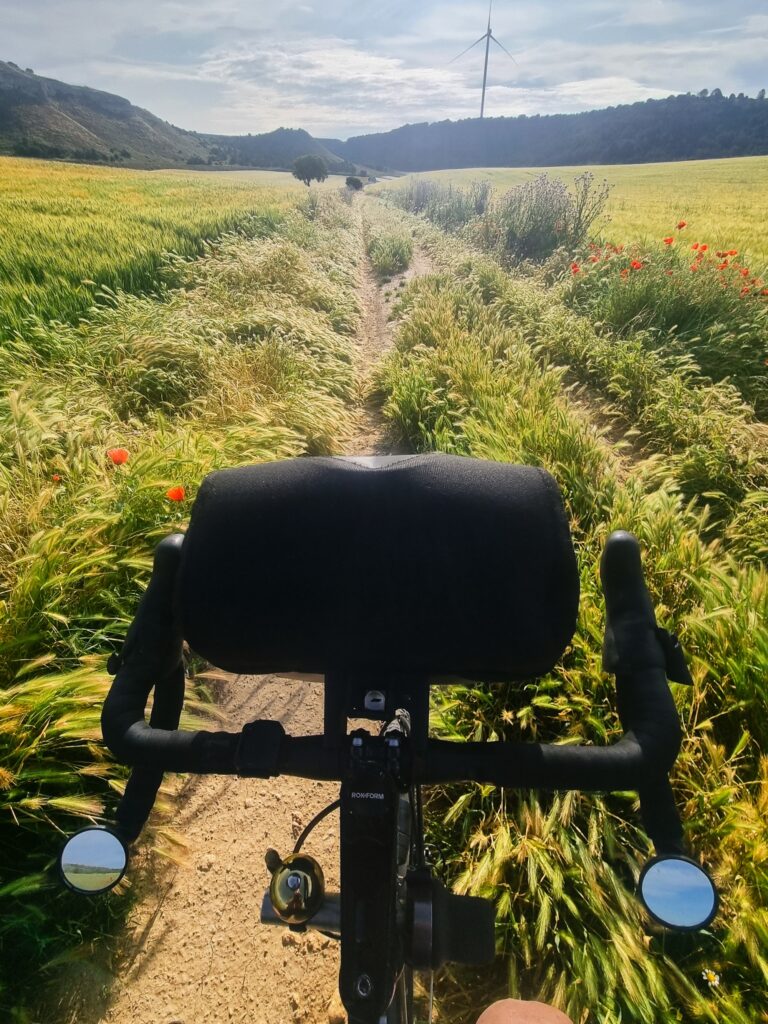
Other times, especially in and around the big cities, google knows the bike routes. Out in the country I’ll often use a car route. But in and out of cities, where there is always bike infrastructure, it’s better to turn on the bike option in google and follow it carefully. This is in Bilbao.
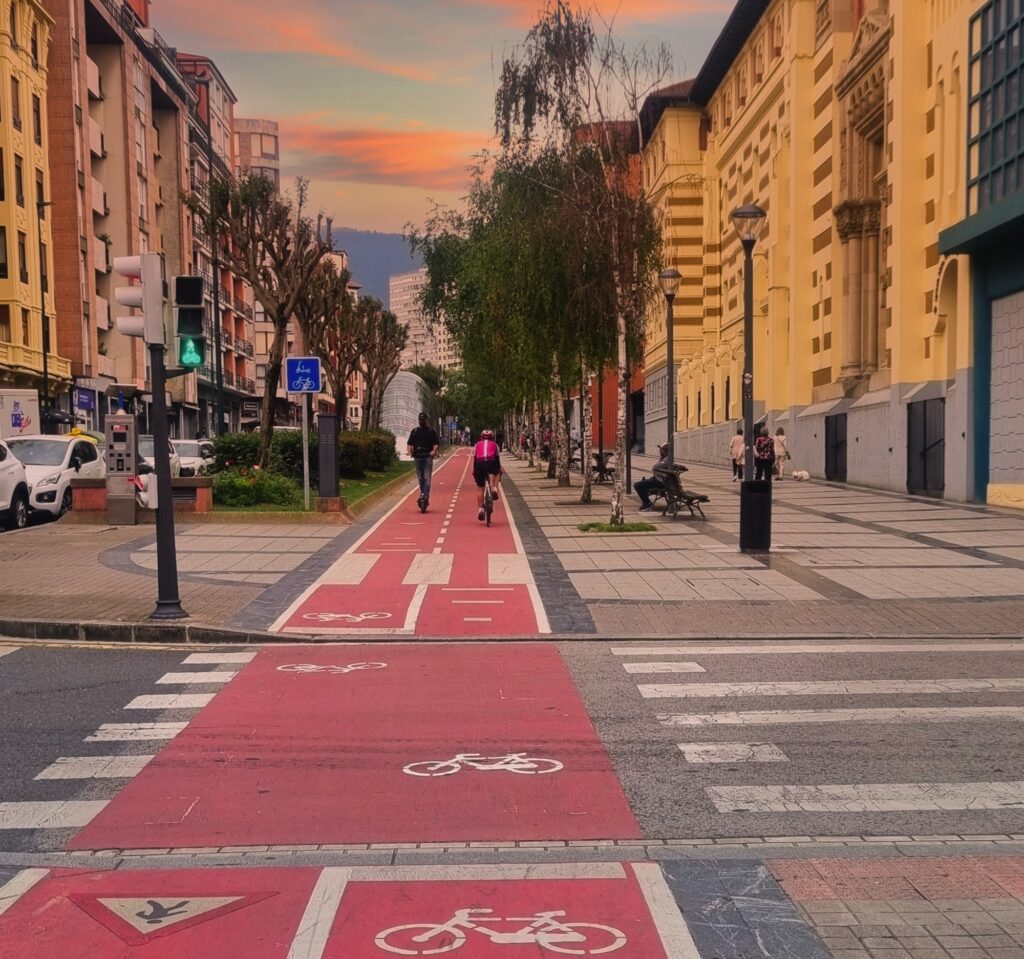
This ride took me into eastern Portugal. Westward from Merida and Badajoz in Spain to Estremoz in Portugal. Estremoz happens to be the source of much of the world’s marble. Cobblestones are marble. The buildings are marble. The vanity basin was carved out of marble. The cemetery is marble. They even grind marble up and mix it with paint.
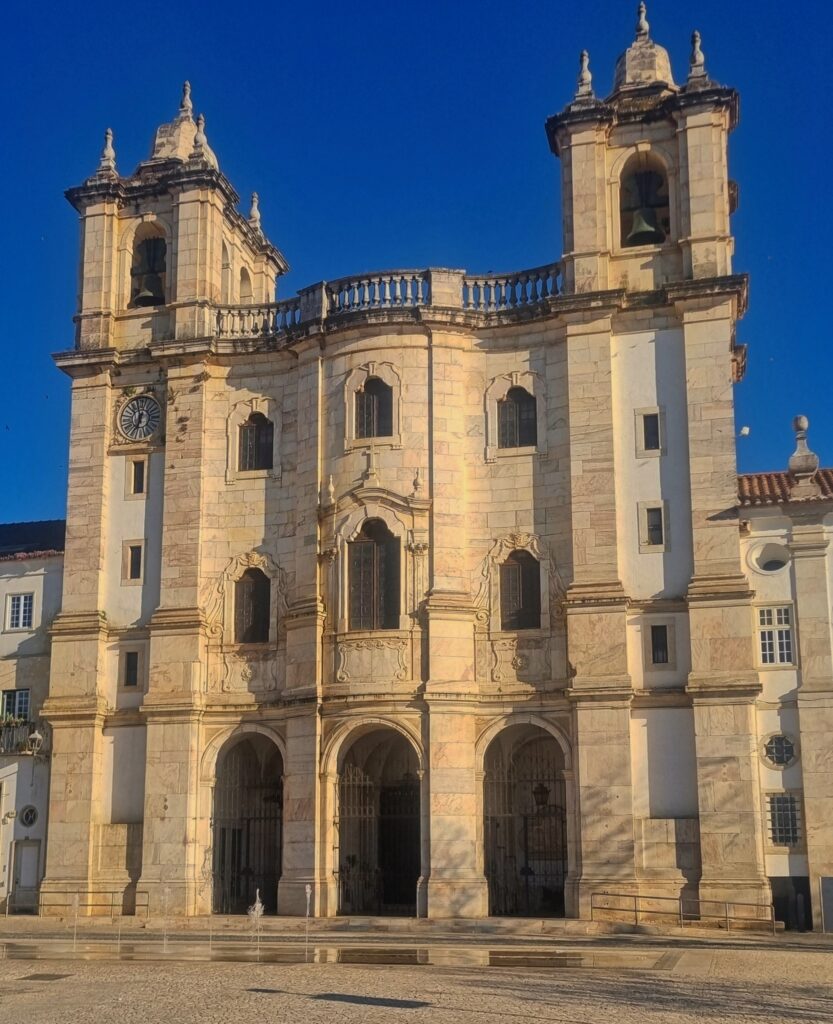
Portugal is experiencing the over-tourism problem, especially in the south (the Algarve) and on the west coast (Lisbon and Porto). House prices are too high. People say there are too many “golden visas”. Populist anti-immigrant parties are winning elections.
But this was not al all an issue in the east of the country. Local businesses were happy to serve me.
An interesting crop in Portugal is cork. Cork is an oak tree that lives for about 200 years. The bark is harvested ever 9-12 years. You see hundreds of the trees along roadsides.
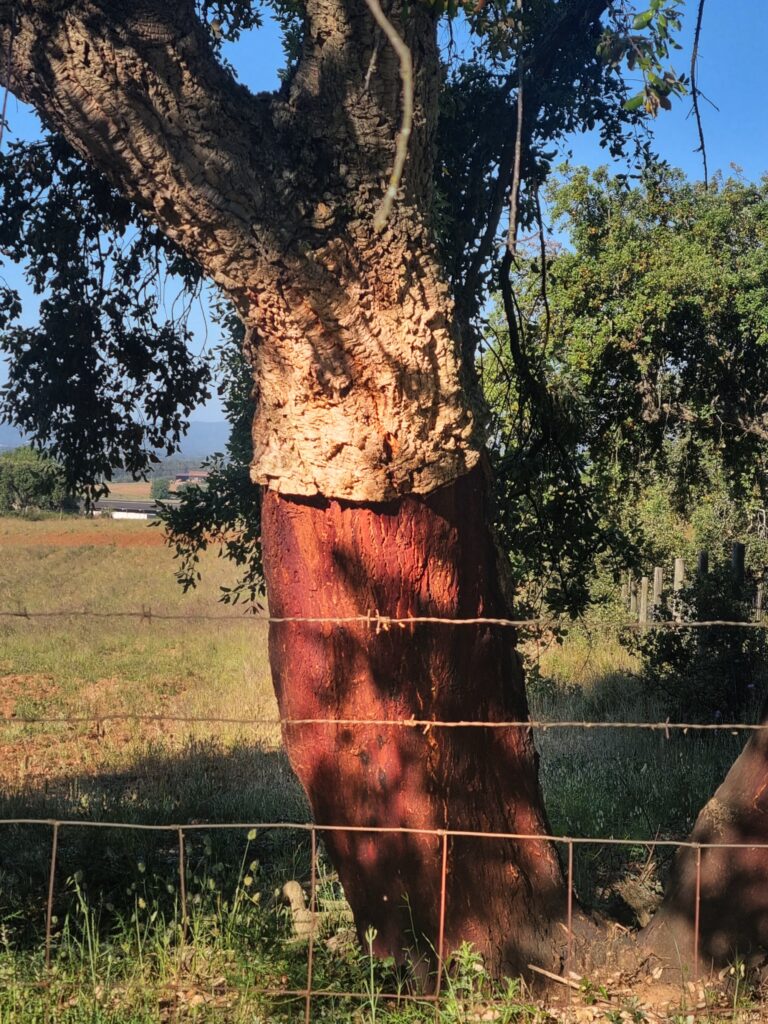
Spain and Portugal are experiencing a long-term reduction in rainfall. Along with increasing temperatures this is causing an expansion of aridity. One result is that water for farming is being treated with greater value. Irrigation is in concrete canals. Compare that with the Murry-Darling basin in Australia where water is running in dirt canals giving rise to massive losses.
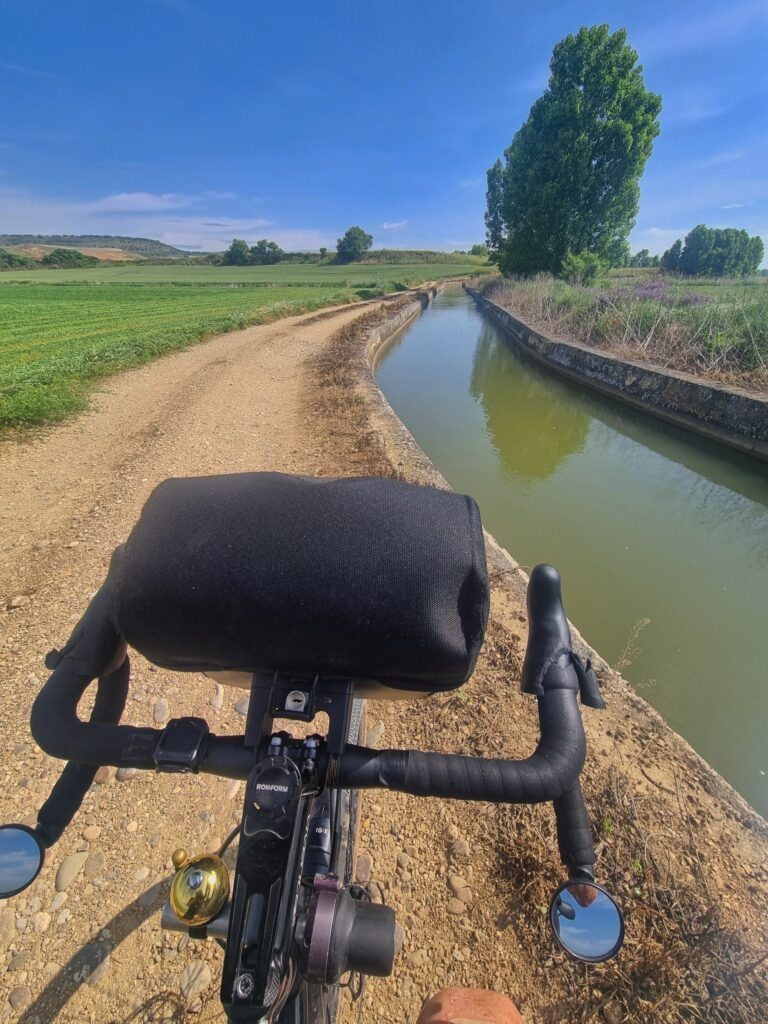
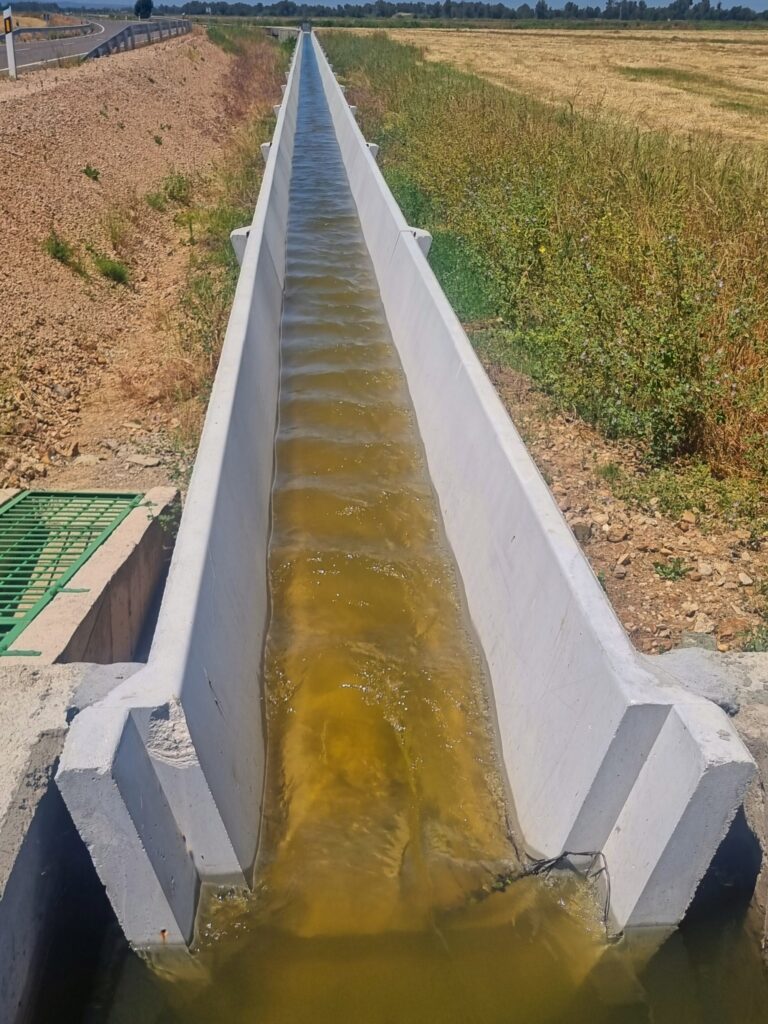
When they use the water, they try do so in the most efficient way as shown in these crops of tomatoes and corn. Meanwhile, in Australia, precious water is being wasted big time.
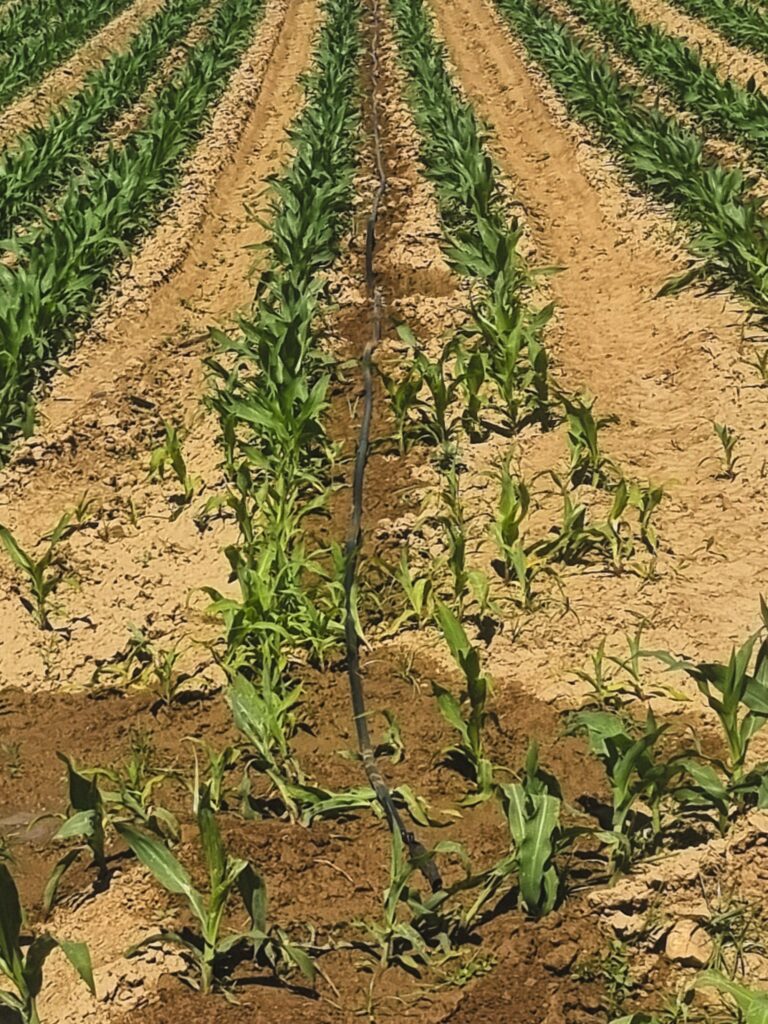
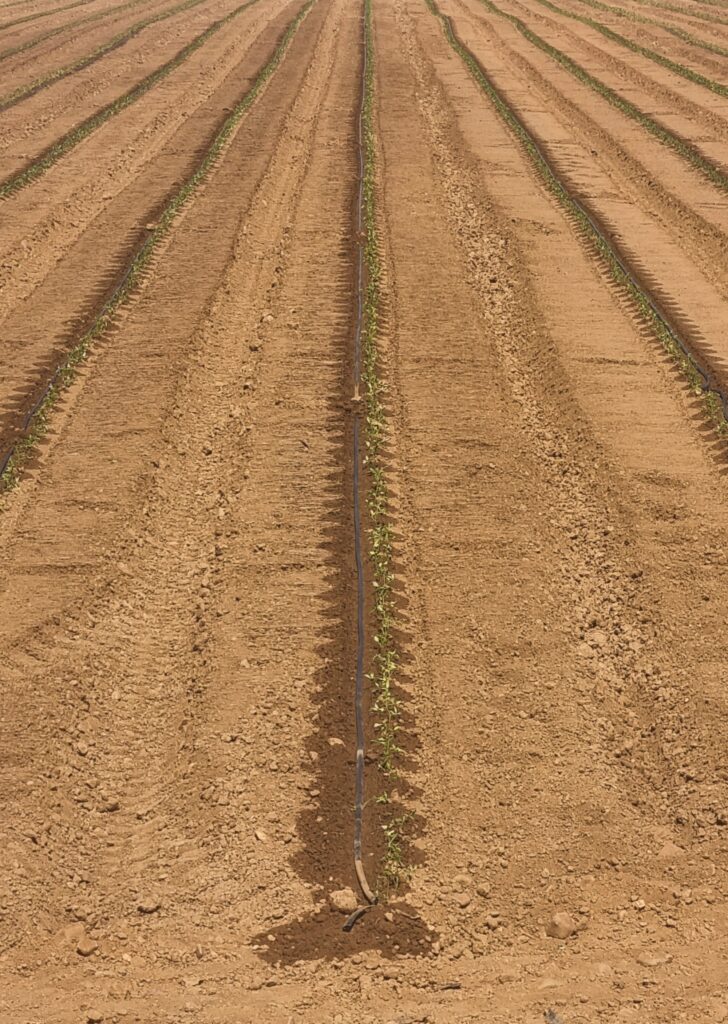
The art of Spain
The quality and amount of public art in Spain needs to be mentioned. Below are just a few examples.
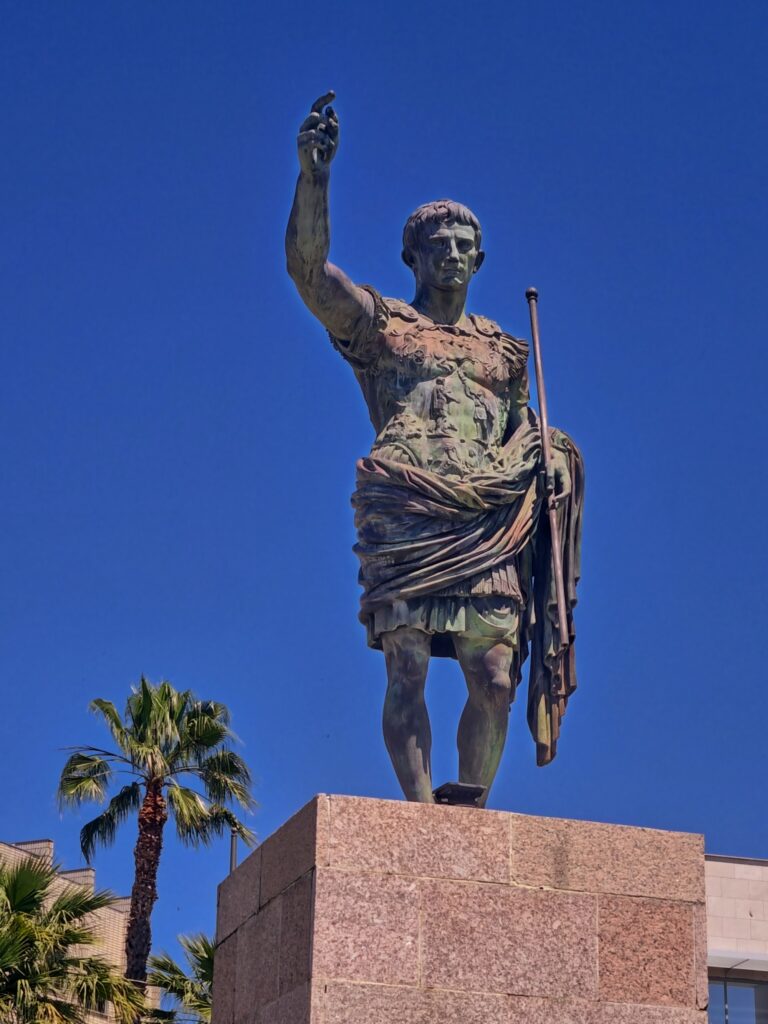
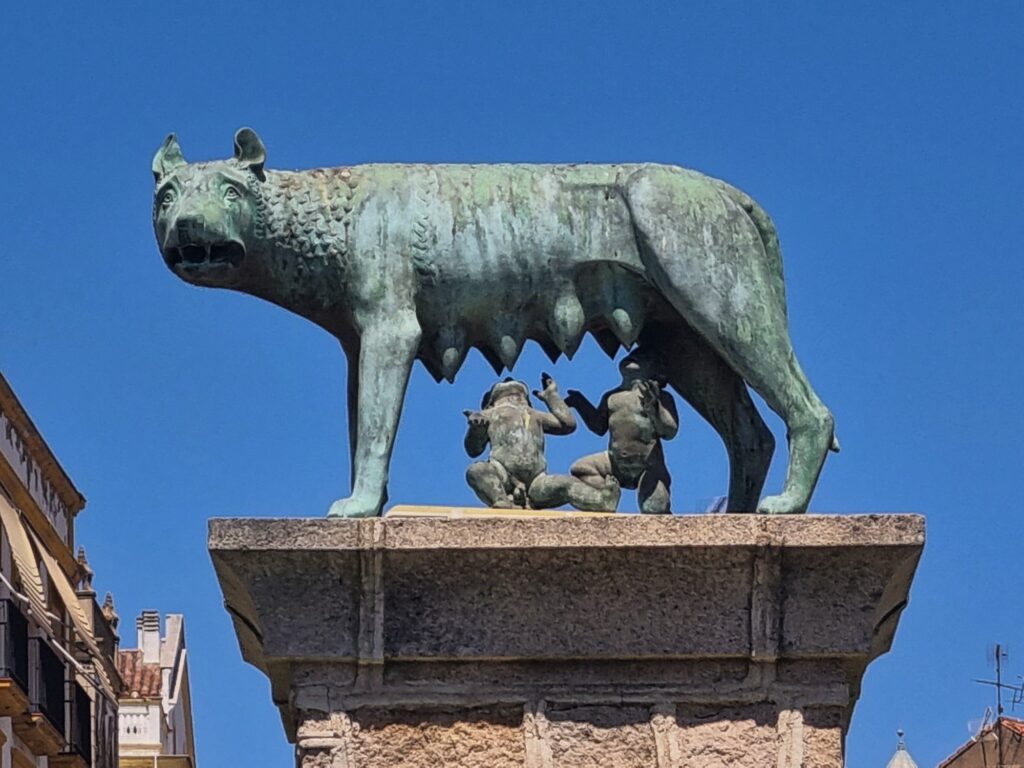
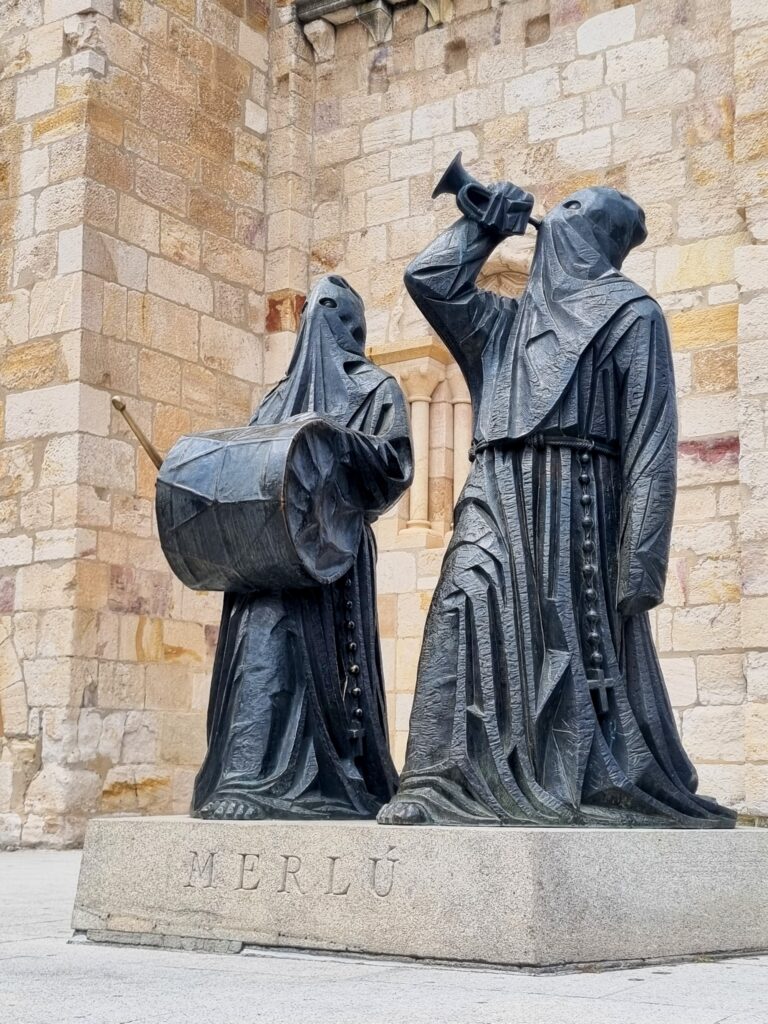
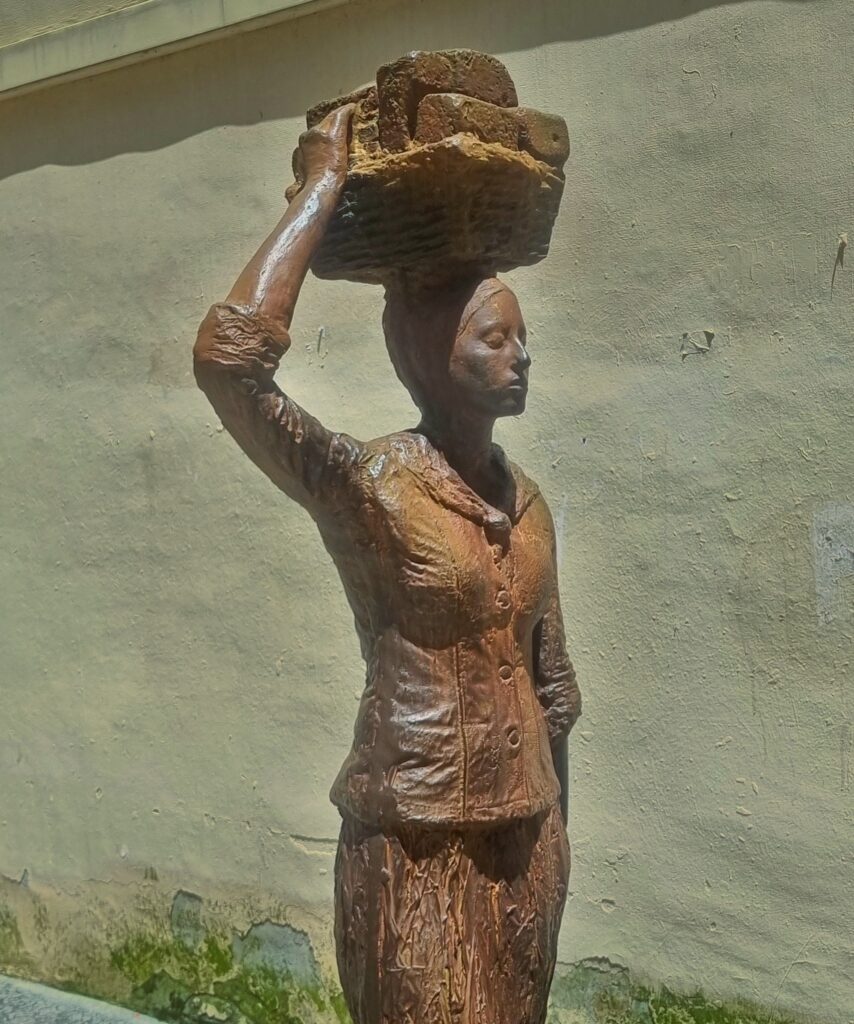

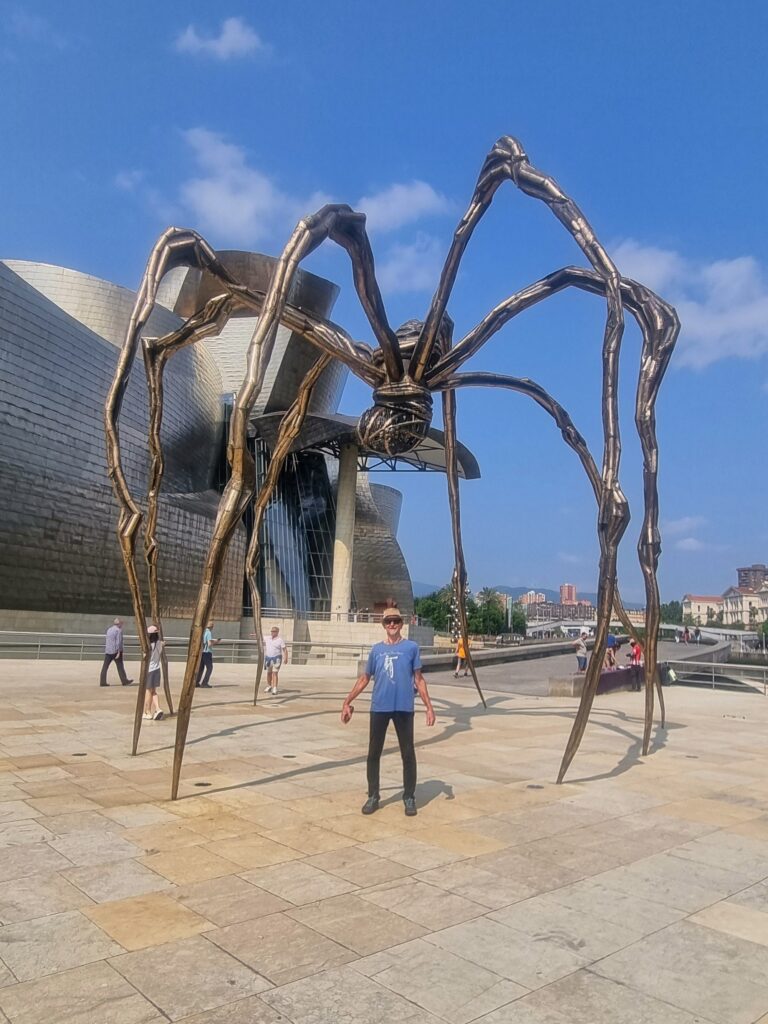
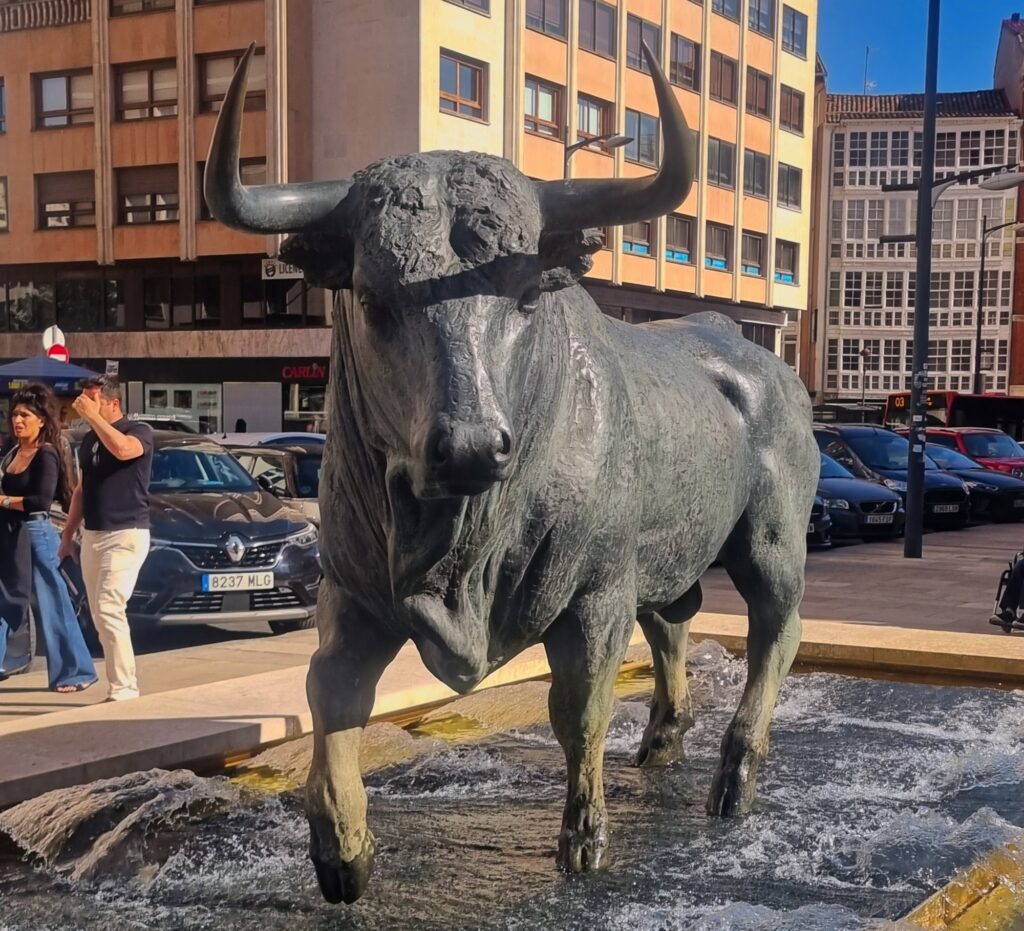
Everyone knows about the Camino de Santiago pilgrimage route. But I did not realise there are multiple routes.
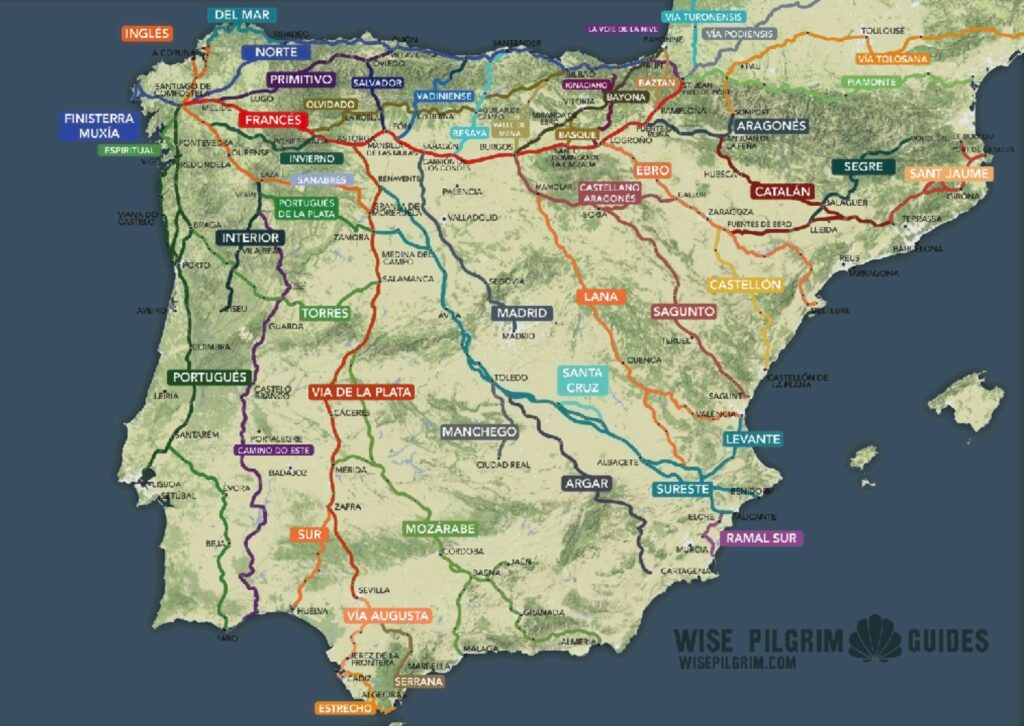
As I moved north, I found I was regularly riding on one of the routes. There are bikers and walkers. Accommodation gets a bit tighter as you approach the Basque country where the routes often converge.
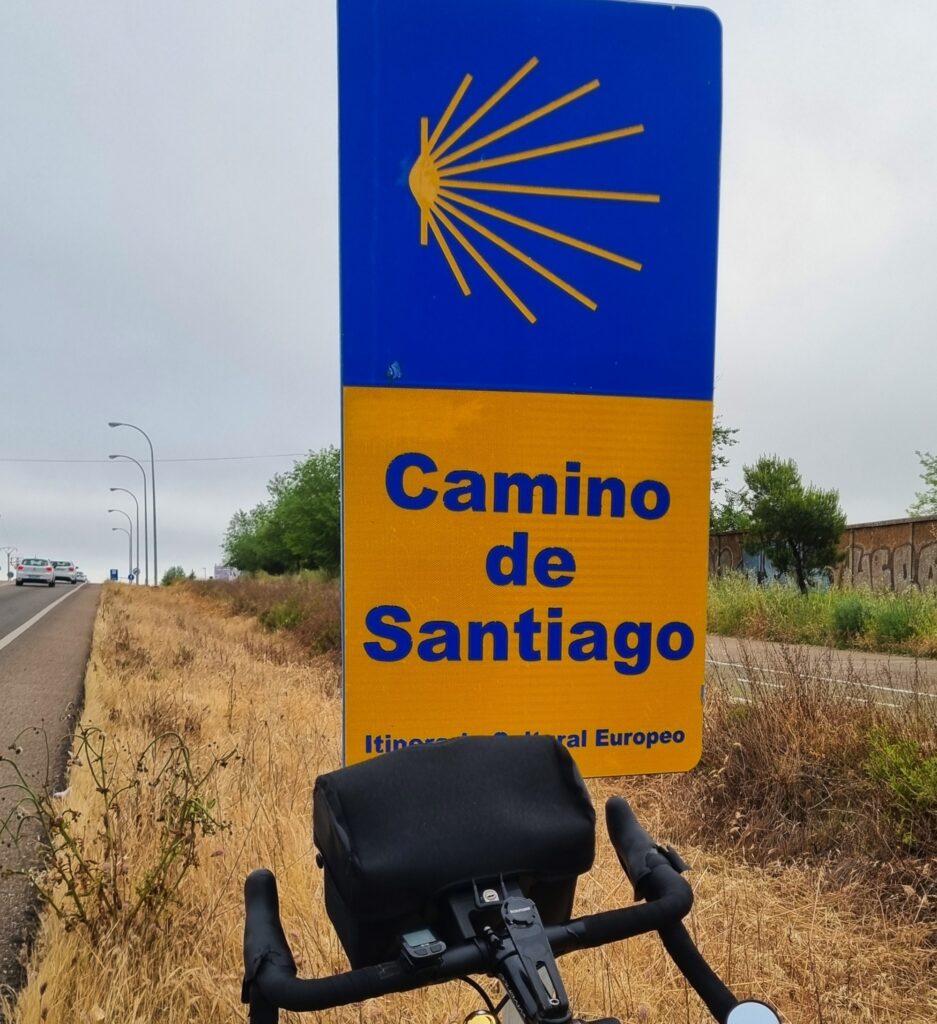
A feature of this ride was having more time in the Basque Country. The language is completely different to Spanish. The absolute treat was having a few days in Bilbao. This city has to be one of the most pleasant on the whole planet. It’s highly recommended!
San Sebastian is a day or two ride to the east of Bilbao. It’s focused on the beach whereas Bilbao is inland a little and hemmed in by forested mountains. Along the Bay of Biscay coast the rainfall is higher. It reminded me of the Black Sea coast in Turkiye.
Bilbao has a population of 350,000. It is relatively flat with a grand layout and 4-8 story buildings. There are very few cars. There’s an underground metro plus lots of walking and cycling. The Guggenheim was opened in 1997 and has become the #1 drawcard.
Bike tours in Spain do have the feature of going through some great cities. Apart from the Basque coast, this trip had me riding through Madrid, Merida, Salamanca, Valladolid and Burgos. They all warrant a rest day and there is no shortage of stunning things to admire.
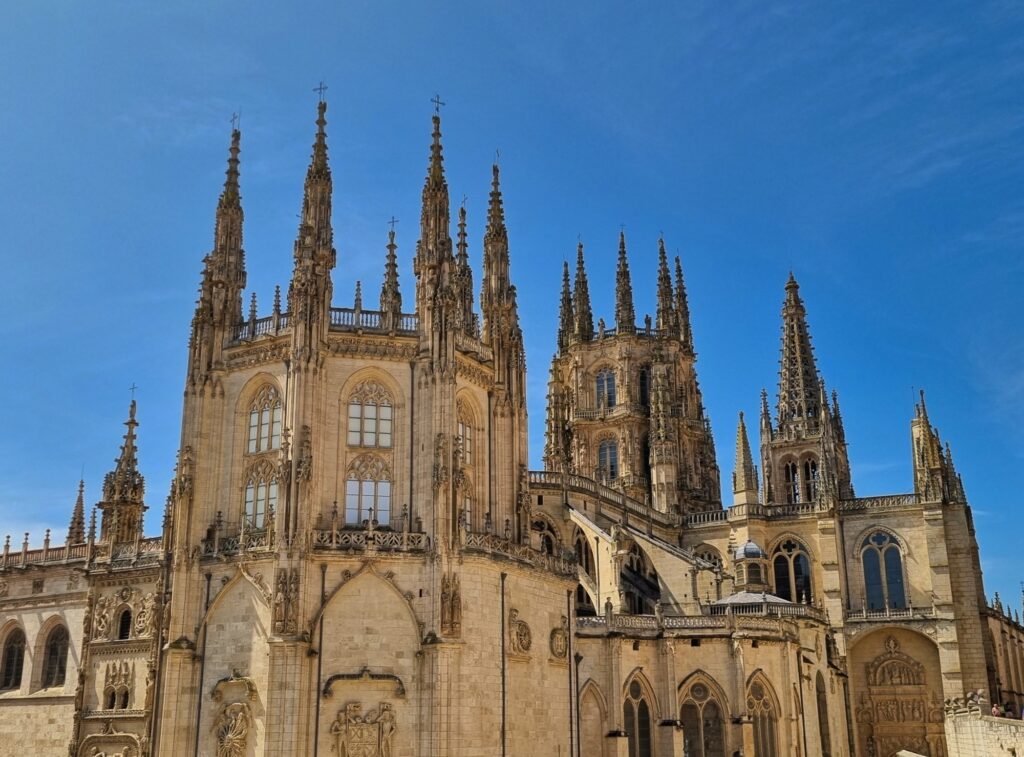
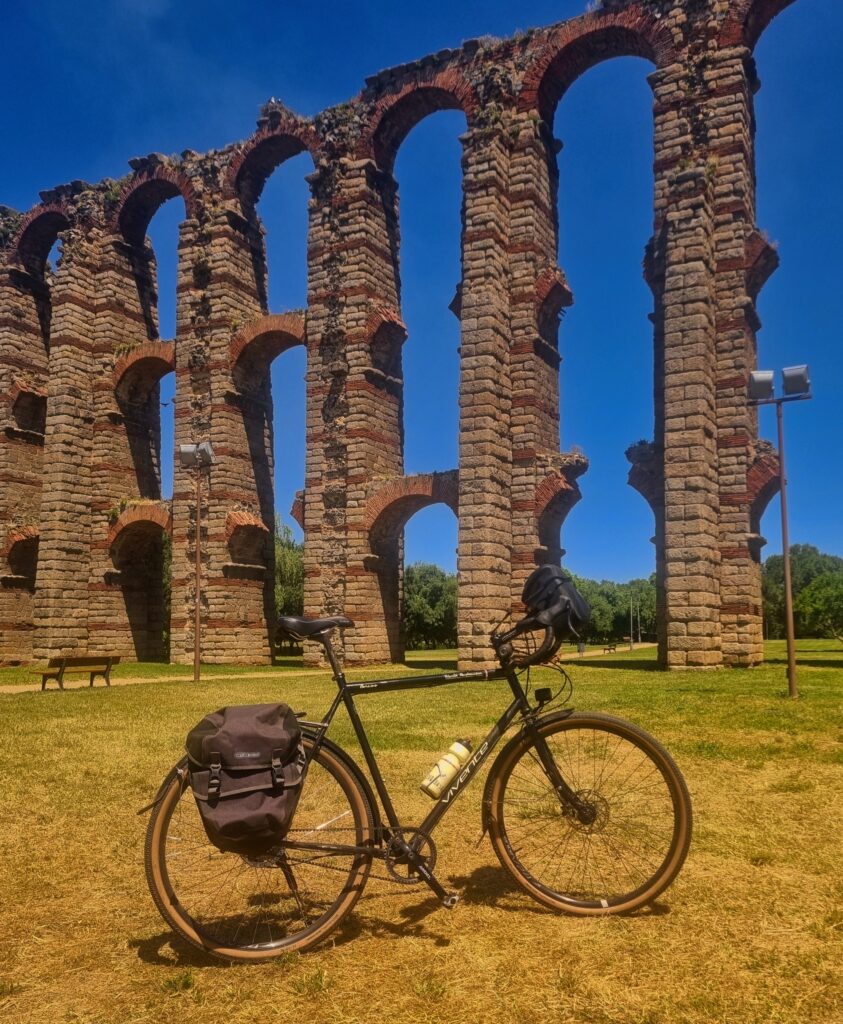
Riding a Vivente with Gates belt drive and Rohloff transmission is, in itself, mechanically uneventful. Nothing goes wrong. So, there’s not much to say about the bike. However, on this ride I had chosen to be tubeless and to not even carry an emergency tube. It was just curiosity. How does if feel to be vulnerable?
My tyres were Schwalbe G-One R 700×45. They are thin skinned, fast and light. They are made for competitive gravel racing. I carried dynaplugs but did not have to use one. I was in a lot of remote places and on some rough stony tracks. If I had a puncture, it was sealed by the solution, and I was unaware of it. I added air using a Lezyne pump with a gauge about every 10 days.
These tyres wear out and are not suitable for a very long trip such as around Australia. They had been on my 700C wheels in the US ride last November, Victoria and South Australia last January and now on this ride. When they reached 3,500 km from the start in the US I decided to rotate them. I had that done at a bike shop in Valladolid. No booking! It was done whilst I had a coffee over the road. New solution and labour cost AUD$50. The rear tyre wears much faster. Now that they are rotated, they might have another 3,000km in them. The below shots were just before the rotation.
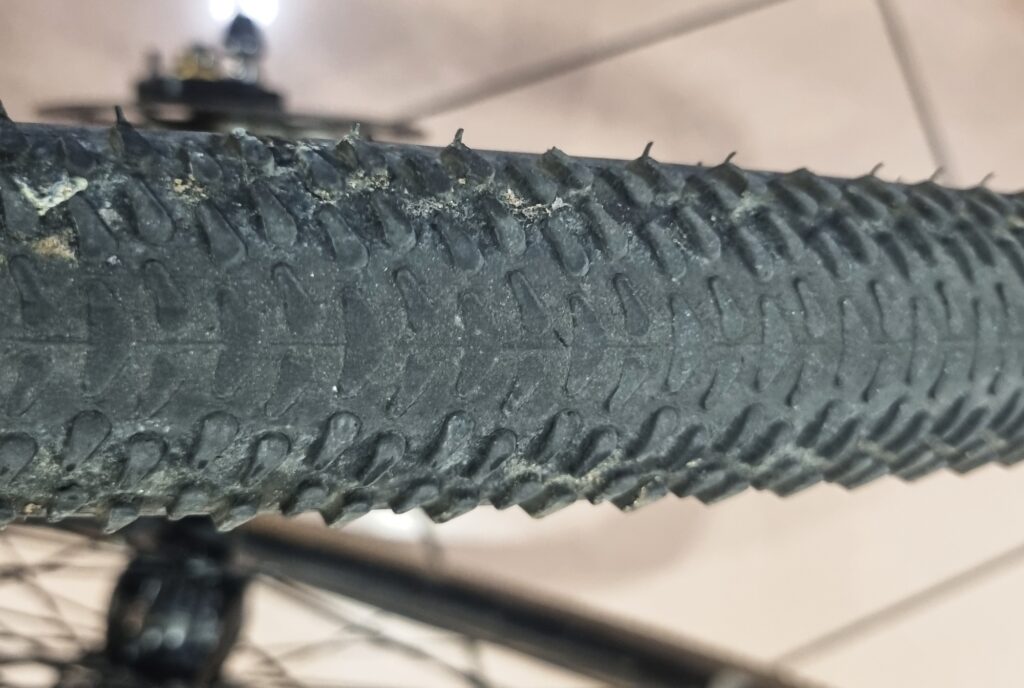
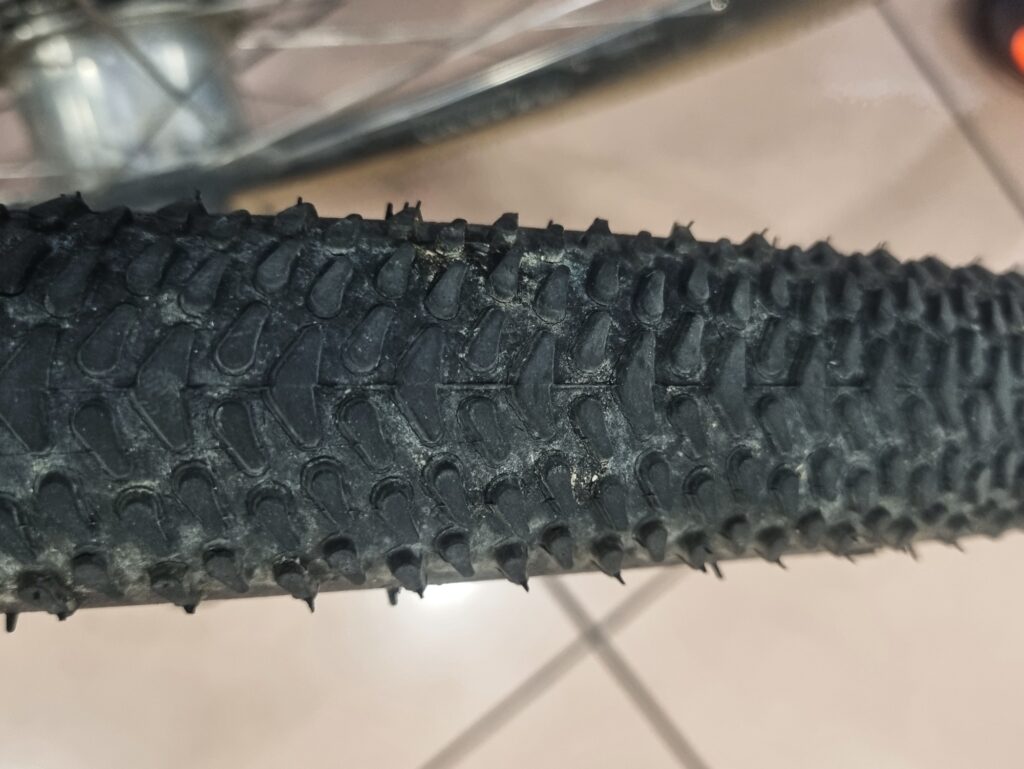
Riding a bike through Spain and Portugal, you spend a lot of time in beautiful and quiet places.
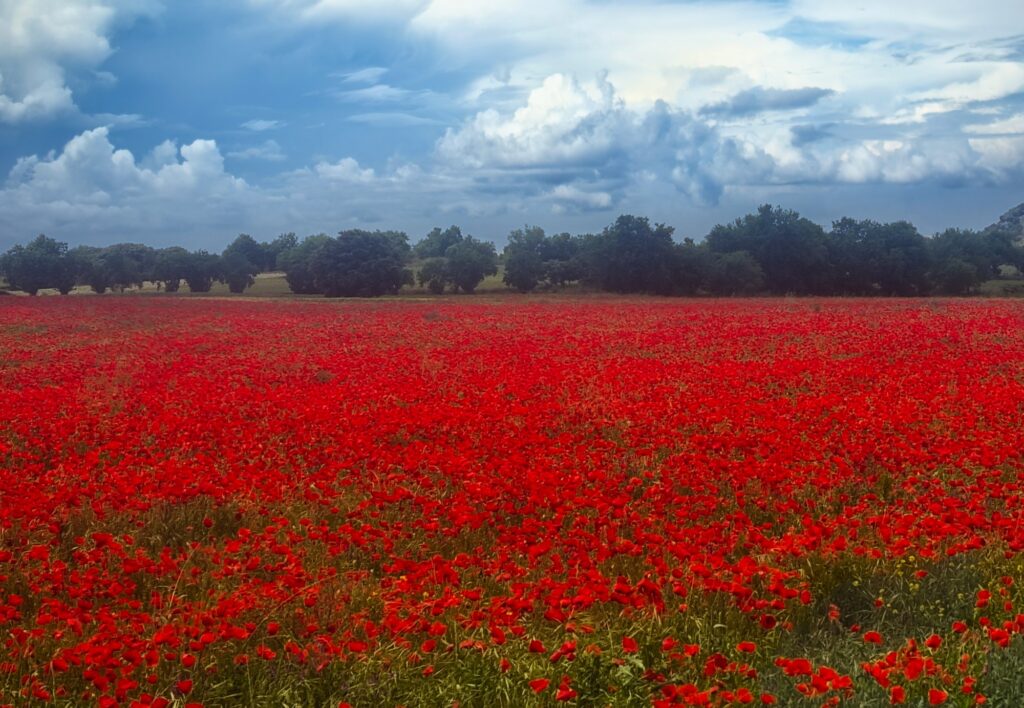
It is poppy season in May and June.
On a track between two valleys, north of Burgos (MP4 file called quiet places)
Another delight of travelling by bike is the roadside fruit. For the Iberian peninsular the best time is autumn when there are figs and grapes everywhere. In June there’s not so much but there were loquats in many areas and cherries in the north.
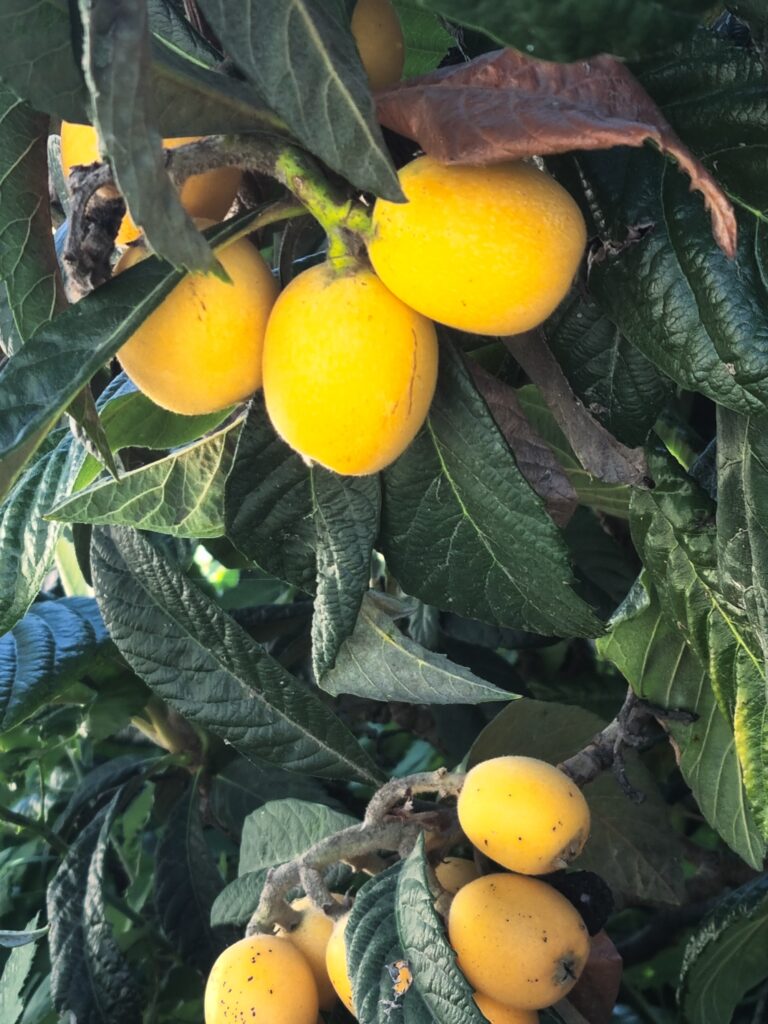
If you need to cover distance in Spain at the start or end of a ride you can use the trains. You need to pack the bike in a tarp. (broken down like we do for flying). Just get a small cheap tarp at the hardware. Best to book a week in advance.
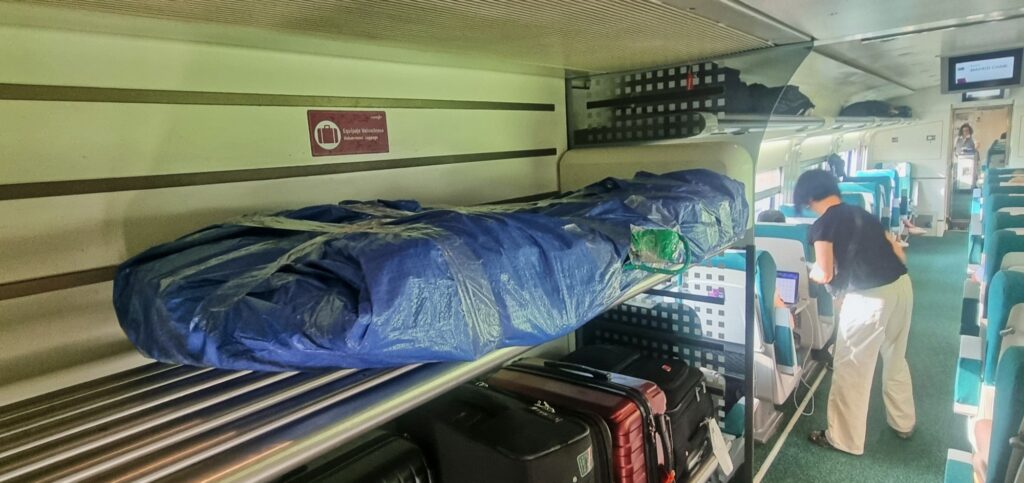
There’s always a great feeling when we arrive in the last city. This is at the beach in San Sebastian. Note the tradie socks!
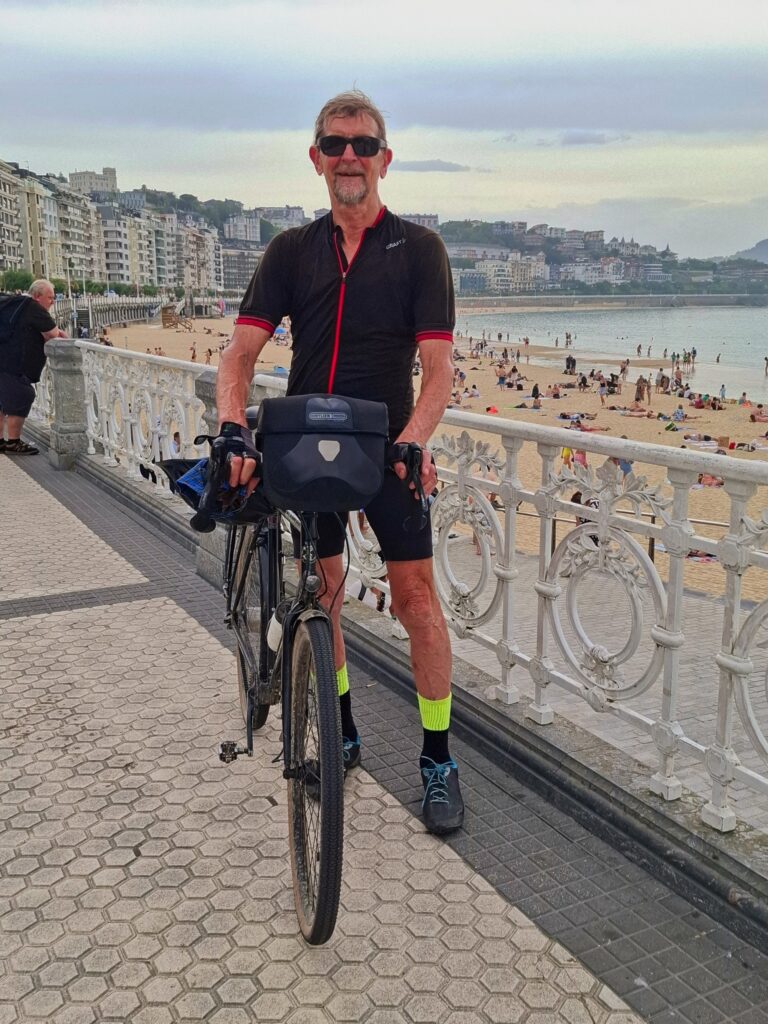
Cycling in Spain
The Spanish really “get” bike riding. Bike infrastructure is fantastic and treatment on the roads could not be better. There was not a single dangerous moment in 1,350km.
Below are two shots from Madrid, demonstrating how much cyclists are cared for by the road designers.
There is a 2.2km road under Madrid airport. That’s a long tunnel! There are two traffic lanes each way with a wide, clean, well lit, protected bike lane in each direction.
In Spanish cities there is a road marking which means (a) a car must stay behind a bike when there is a bike and (b) in any case, a car may not exceed 30kph. This happens even on some 6-lane roads.
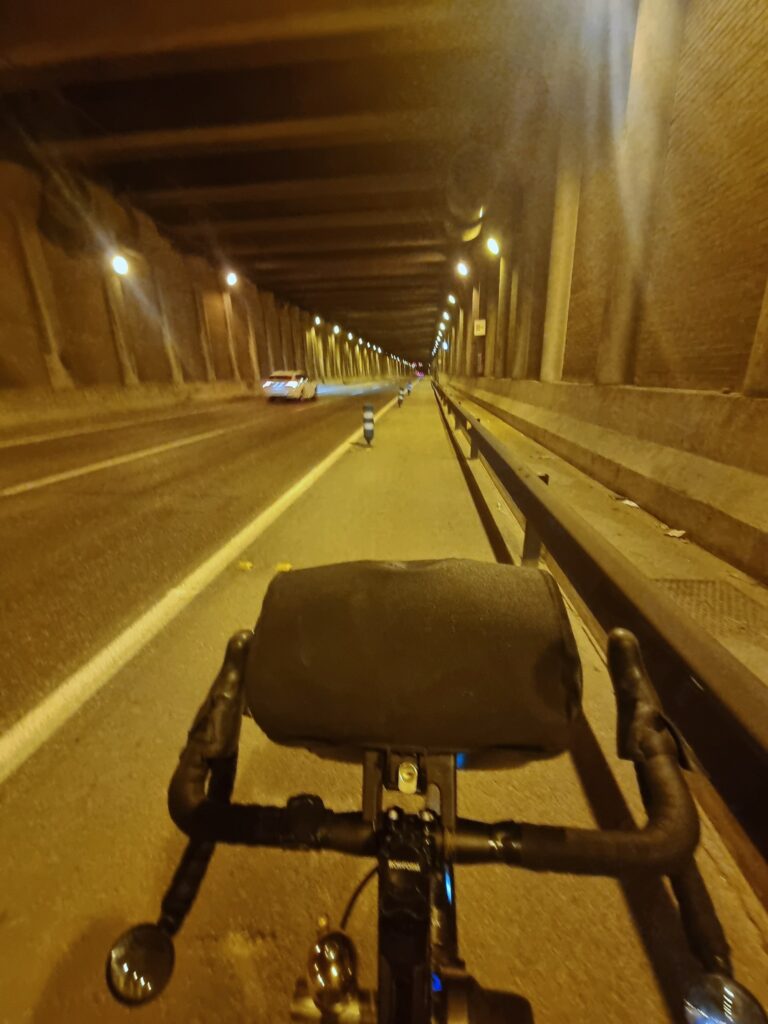
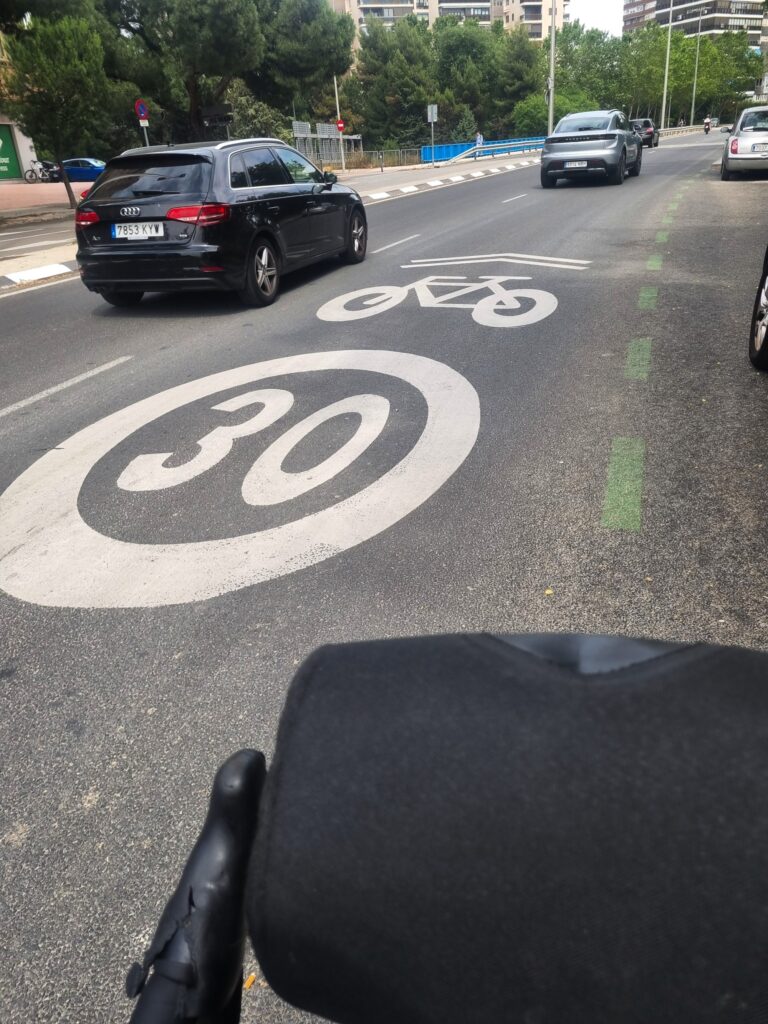
At Madrid airport bike cartons are available at the Left Luggage.
Thinking ahead for further Iberian rides, an option could be Barcelona to Santiago de Compostela via Zaragoza, Pamplona, the Basque and Galicia. In Autum when the figs and grapes are ripe. Spain is so good! And we need to keep testing our bikes.